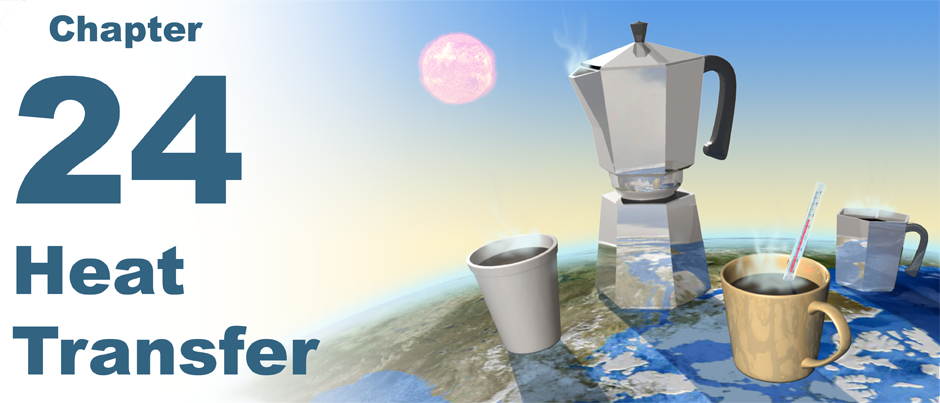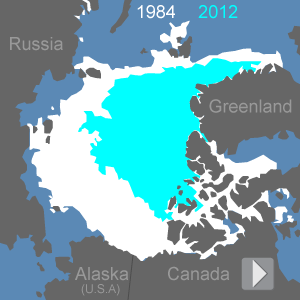 |
Heat flows from the Sun to Earth through the vacuum of space in the form of electromagnetic radiation. Less well known is that Earth must reradiate the same amount of energy back into space again! For our planet’s temperature to remain constant (on average), the energy input from the Sun must equal the energy output from Earth. 
|
While the 5,500°C Sun’s radiant energy comes chiefly in the form of visible light, the much cooler Earth (14°C on average) glows in infrared light. Furthermore, Earth’s atmosphere is not equally transparent to all forms of electromagnetic radiation. Much of the Earth’s infrared glow is blocked by gases such as carbon dioxide, methane, and water vapor. By itself this is no cause for alarm; indeed, without these greenhouse gases Earth would be too cold to sustain life. 
|
 But Earth’s temperature is set by a very delicate balance of energy flow, and when its atmosphere becomes more opaque to infrared light, our planet responds by heating up. Atmospheric carbon dioxide has increased by 20% since the 1950s, in large part because of our burning fossil fuels such as coal, oil, and natural gas. Most climate scientists conclude that this has caused the record-breaking high temperatures of recent years. Another global consequence of heat transfer can be seen in satellite images of the Arctic Ocean, where the summertime ice cap has recently shrunk by more than 25% over 10 years. This threatens the survival of iconic species such as the polar bear.
But Earth’s temperature is set by a very delicate balance of energy flow, and when its atmosphere becomes more opaque to infrared light, our planet responds by heating up. Atmospheric carbon dioxide has increased by 20% since the 1950s, in large part because of our burning fossil fuels such as coal, oil, and natural gas. Most climate scientists conclude that this has caused the record-breaking high temperatures of recent years. Another global consequence of heat transfer can be seen in satellite images of the Arctic Ocean, where the summertime ice cap has recently shrunk by more than 25% over 10 years. This threatens the survival of iconic species such as the polar bear. 
|
Even bigger changes may be in store. Since water absorbs much more sunlight than does ice, the Arctic is now retaining much more of the Sun’s radiant energy than it did in the past century. This may set off a positive feedback loop, where temperatures rise, more ice melts, oceans absorb more sunlight, and temperatures rise again. Some scientists have proposed stabilizing measures that would make the Arctic “shiny” once more, including seeding the atmosphere with tiny particles to reflect sunlight or help form clouds. The science of Earth’s changing thermal energy balance has led to a society-wide discussion of how to address its consequences. 
|
| |
|

